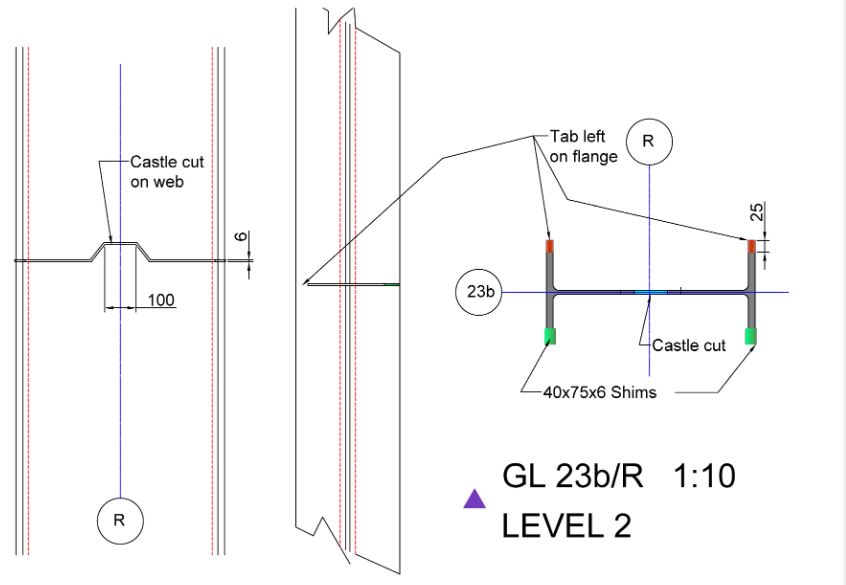Pre-weakening is the process of weakening an element of a structure in preparation for demolition by a pull-down or blowdown. The weakening process can involve removing elements or making cuts to weaken specific elements.
Pulling down a structure is as it sounds. It is the application of a mechanical force to a structure to overcome the remaining stability.
To blow down a structure, explosive energy is applied to overcome the remaining stability. This is normally achieved through the use of kicking charges, which are designed specifically to dislodge structural components.
With concrete structures, we can also fracture the concrete, using the potential energy of the structure to drive the collapse.
Pre-weakening is a complex engineering element that requires high levels of engineering expertise during the design, planning and execution phases.
Why we pre-weaken structures
Pre-weakening is used on large or complex structures with sufficient clear areas surrounding them for the structure to collapse. It is suited to RC and steel structures. Typically large industrial structures such as power stations, large dock cranes, coal conveyors etc.
It is an efficient way to reduce the structure to a lower level; allowing mechanical plant to finish processing for onward transport.
Pre-weakening risk factors
A high level of engineering expertise is required to design and execute pre-weakening schemes safely and effectively.
If a structure is not sufficiently pre-weakened, then the amount of energy required to trigger the collapse may not be available. This could lead to a stand-up or to an uneven collapse. Stand-up is when the structure fails to collapse following the application of the expected forces, be that explosive or mechanical. However, if the structure is weakened too much, it could collapse prematurely.
The key is to understand the structure, how it will behave as it is pre-weakened, and how this will affect its stability. This may involve a range of analyses and calculations to justify the proposed scheme, which could include sensitivity and wind load analysis.
Considerations for pre-weakening
During our webinar on demolition for temporary works, Angus Holdsworth discusses the key considerations to consider when pre weakening a structure, with a particular focus on two case studies where Andun have been involved in the demolition engineering.
Pre-weakening design check category
The range of engineering considerations and impact of failure mean that pre- weakening is defined by the National Federation of Demolition Contractors as a class 3 (high-risk) activity.
This means that typically, a pre-weakening scheme will require a CAT 3 check under BS5975.


